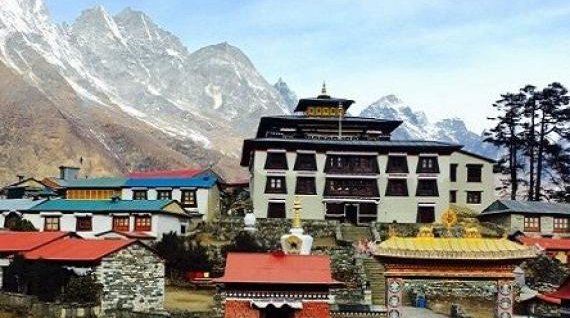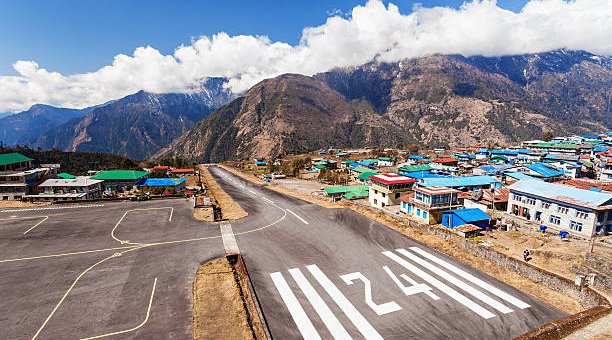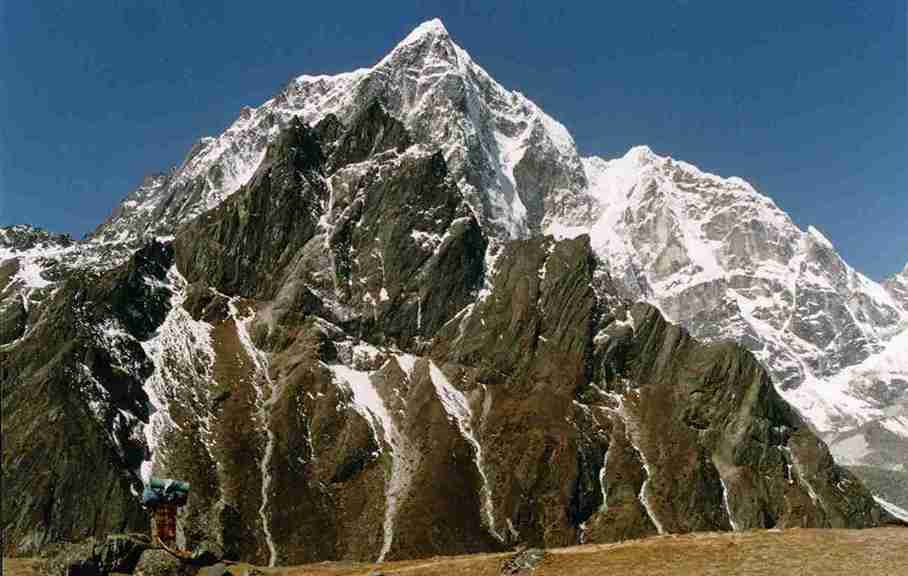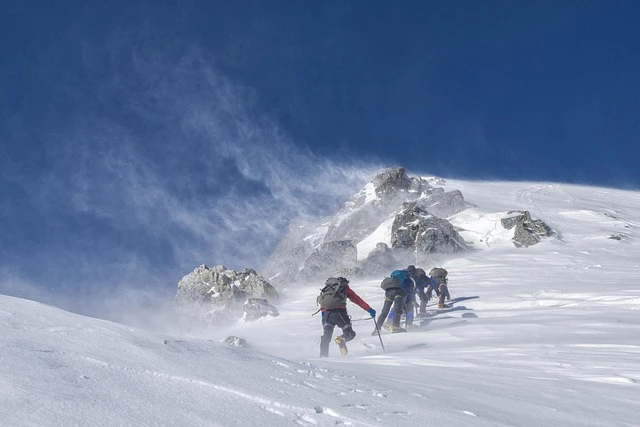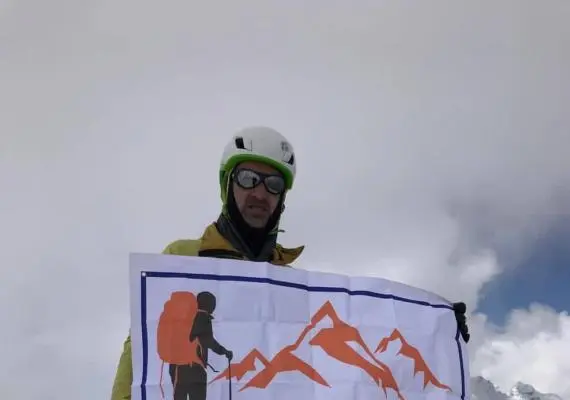When the morning mist lifts from the Dudh Koshi valley, revealing rhododendron forests clinging to steep hillsides and the first glimpse of snow-capped giants ahead, you know you're entering something extraordinary. The Everest Tengboche Trek isn't just another mountain walk—it's a journey into the spiritual heart of the Himalayas, where ancient monasteries perch impossibly on ridge tops and prayer flags carry wishes to peaks that touch the sky.
I've walked these trails countless times, watching travelers' faces transform from travel-weary uncertainty to wonder as Ama Dablam reveals her perfect pyramid, as monastery bells echo off canyon walls, as Everest herself emerges like a shy giant behind her protective wall of Nuptse and Lhotse. This trek offers what many longer, harder routes miss: the perfect balance of adventure and accessibility, challenge and contemplation, natural grandeur and cultural immersion.
The Everest Tengboche Trek takes you to 3,867 meters, high enough to feel the thin air's honesty but not so high that suffering overshadows joy. Over ten carefully planned days, you'll discover why Tengboche Monastery is considered the spiritual center of the Khumbu, why Sherpas speak of mountains as deities, and why sometimes the most profound journeys aren't about reaching the highest point but finding the most meaningful one.
Trip Highlights
- Thrilling mountain flight from Kathmandu to Lukla—your 35-minute gateway to adventure
- Tengboche Monastery at 3,867m—witness daily prayers in Buddhism's highest active monastery
- Unmatched mountain panorama—Everest, Lhotse, Nuptse, and Ama Dablam in one sweeping view
- Authentic Sherpa villages—experience genuine hospitality in Namche, Khumjung, and beyond
- Moderate trekking difficulty—challenging enough to feel accomplished, accessible enough to enjoy
- Sagarmatha National Park—trek through a UNESCO World Heritage site
- Strategic acclimatization—built-in rest days ensure safe, comfortable altitude adaptation
- Rhododendron forests—especially spectacular during spring blooms
- Traditional teahouse stays—simple comfort with extraordinary views
- Cultural immersion opportunities—from morning prayers to butter tea with locals
Quick Itinerary for Everest Tengboche Trek
- Day 1: Arrive Kathmandu—meet your team, final preparations
- Day 2: Fly to Lukla (2,860m) → trek to Phakding (2,610m)
- Day 3: Trek to Namche Bazaar (3,440m)—enter the Sherpa capital
- Day 4: Acclimatization in Namche—hike to Everest View Hotel & Sherpa Museum
- Day 5: Trek to Tengboche Monastery (3,867m)—reach the spiritual heart
- Day 6: Explore Tengboche—morning rituals and mountain meditation
- Day 7: Return to Namche via forest trails—new perspectives
- Day 8: Namche to Phakding—scenic valley descent
- Day 9: Phakding to Lukla—final trail day
- Day 10: Fly to Kathmandu—farewell and departures
Physical Fitness Requirements
Let me share something honest about mountain fitness—it's not about being an athlete, it's about being prepared for sustained effort. The Everest Tengboche Trek asks your body to perform consistently rather than spectacularly, to keep moving when breathing gets harder, to find rhythm when trails steepen.
Training Timeline
- Start 6-8 weeks before departure—give your body time to adapt
- Focus on walking endurance—not speed or intensity
- Build gradually—from 30-minute walks to 3-hour hikes
- Add weight slowly—work up to carrying 10kg comfortably
Specific Preparation
- Cardiovascular base—walking, hiking, swimming, or cycling 4-5 times weekly
- Leg strength—squats, lunges, and step-ups prepare muscles for thousands of stone steps
- Core stability—helps with balance on uneven terrain
- Flexibility—yoga or stretching prevents injury and aids recovery
Daily Trek Reality
- Walking duration: 5-6 hours including breaks
- Terrain variety: Stone paths, dirt trails, occasional rocky sections
- Elevation changes: 400-800m gain/loss per day
- Rest frequency: Every hour for water and photos
Mental Preparation
- Practice patience—mountain pace differs from city speed
- Build resilience—train in various weather conditions
- Develop rhythm—find meditation in repetitive motion
- Visualize success—imagine yourself strong at Tengboche
Permits & Regulations for Everest Tengboche trek
Understanding permit requirements helps you appreciate how tourism supports conservation and local communities in this remarkable region. Every rupee from permits funds the preservation of trails, forests, and culture that make the Everest Tengboche Trek possible.
Required Permits
- Sagarmatha National Park Entry Permit
- Cost: NPR 3,000 (approximately $25 USD)
- Validity: Single entry for your trek duration
- Purpose: Funds park conservation and maintenance
- Where: Obtained in Kathmandu or Monjo
- TIMS Card (Trekkers' Information Management System)
- Cost: NPR 1,000-2,000
- Purpose: Safety tracking and emergency coordination
- Requirement: Mandatory for all trekkers
- Benefit: Enables quick rescue response if needed
Current Regulations
- Licensed guide requirement—solo trekking no longer permitted
- Porter weight limits—maximum 20kg for porter welfare
- Environmental rules—carry out all non-biodegradable waste
- Cultural respect—photography restrictions at religious sites
Ethical Trekking Support
- Fair wages—ensure your company pays above minimum standards
- Proper equipment—porters should have adequate gear
- Insurance coverage—verify porter insurance inclusion
- Local business priority—eat and shop in family-run establishments
Acclimatization Tips for Everest Tengboche trek
Living at altitude requires respect and patience. Your body performs miracles adapting to thin air, creating more red blood cells, adjusting breathing patterns, and redistributing blood flow. Give it time, and you'll be rewarded with energy and clarity at heights that initially challenged you.
Understanding Altitude Effects
- Above 3,000m—oxygen levels drop noticeably
- Common symptoms—mild headache, breathlessness, sleep disruption
- Normal adjustments—increased urination, vivid dreams
- Warning signs—persistent headache, nausea, extreme fatigue
Prevention Strategies
- Hydration is crucial—drink 3-4 liters daily, even when not thirsty
- "Climb high, sleep low"—day hikes above sleeping altitude help
- Pace yourself—if you can't talk while walking, slow down
- Rest actively—light movement aids acclimatization better than complete rest
Namche Acclimatization Day
- Morning hike—climb to Everest View Hotel at 3,880m
- Cultural exploration—visit Sherpa Museum and monastery
- Market wandering—gentle activity keeps blood moving
- Hydration focus—use rest day to catch up on fluids
Tengboche Practices
- Meditation benefits—relaxation aids altitude adaptation
- Gentle exploration—short walks without pack weight
- Photography time—capture views without rushing
- Monastery participation—if permitted, join morning prayers
Packing List for Everest Tengboche trek
Years of guiding have taught me that proper gear makes the difference between enduring and enjoying your trek. Pack thoughtfully—every item should earn its place in your bag through usefulness, not fear.
Clothing & Footwear
- Base layers—2-3 sets of moisture-wicking thermals
- Insulation—fleece jacket and light down jacket
- Shell layer—waterproof, breathable jacket and pants
- Trek wear—3 quick-dry shirts, 2-3 trekking pants
- Accessories—warm hat, sun hat, buff, gloves
- Footwear—sturdy trekking boots (broken in!)
- Extra footwear—camp shoes for lodge comfort
- Socks—5-6 pairs wool or synthetic blend
Essential Gear
- Daypack—30-40 liter capacity
- Sleeping bag—rated to -10°C (rental available)
- Trekking poles—invaluable for knee protection
- Headlamp—with extra batteries
- Sunglasses—Category 3-4 UV protection
- Water bottles—2 x 1-liter capacity
- Water purification—tablets or SteriPEN
- Toiletries—biodegradable soap, toothbrush, etc.
Health & Safety
- First-aid supplies—blister treatment, pain relief, bandages
- Sunscreen—SPF 50+ minimum
- Lip balm—with sun protection
- Medications—personal prescriptions plus basic remedies
- Hand sanitizer—small bottle for hygiene
- Toilet paper—not always provided in lodges
Documents & Extras
- Passport—with 6 months validity
- Travel insurance—must cover up to 4,000m altitude
- Emergency contacts—written separately from phone
- Cash—Nepali rupees for lodge expenses
- Entertainment—book, cards, or journal
- Snacks—energy bars, nuts, chocolate
- Camera gear—extra batteries crucial in cold
- Power bank—charging costs increase with altitude
Package Overview
Our Everest Tengboche Trek package thoughtfully balances all elements needed for a meaningful mountain experience. We've refined this itinerary over years, learning what creates joy versus stress, achievement versus exhaustion.
Package Essentials
- Duration: 10 days total adventure
- Difficulty: Moderate—achievable for regular hikers
- Maximum altitude: 3,867m at Tengboche Monastery
- Group size: Small groups (2-8 people) for personal attention
- Accommodation: Traditional teahouse lodges
- Meals: All meals during trek included
What's Included
- Flights: Round-trip Kathmandu-Lukla airfare
- Permits: All necessary documentation arranged
- Guide services: Experienced, English-speaking local guide
- Porter support: One porter per two trekkers
- Accommodation: Twin-sharing rooms in best available lodges
- Safety equipment: First-aid kit, oximeter, communication devices
Special Features
- Cultural immersion—guided monastery visits and village interactions
- Photography guidance—best viewpoints and timing shared
- Flexible itinerary—adjustable for weather or group needs
- Acclimatization focus—built-in rest days for safety
- Local support—prioritizing community-owned businesses
Mani Rimdu Festival Everest Region
Timing your trek with Mani Rimdu transforms an already meaningful journey into something extraordinary. This most important Buddhist festival in the Khumbu brings the monastery alive with color, movement, and ancient ritual.
Festival Elements
- Sacred masked dances (Cham)—monks embody deities through movement
- Elaborate costumes—silk brocades and papier-mâché masks
- Buddhist teachings—lamas offer blessings to assembled crowds
- Community gathering—Sherpas travel days to attend
- Tourist participation—respectful observers welcome
Timing Your Visit
- October/November dates—varies yearly with Tibetan calendar
- Three-day celebration—each day offers different ceremonies
- Advance booking essential—limited lodge space during festival
- Cultural preparation—understanding enhances appreciation
Seasonal Considerations
Autumn (October-November):
- Advantages: Mani Rimdu festival, crystal-clear skies, stable weather
- Challenges: Busier trails, advance booking necessary
- Temperature: Days 10-15°C, nights -5°C to 0°C
- Visibility: Best mountain views of entire year
Spring (March-May):
- Advantages: Rhododendron blooms, warming temperatures, quieter trails
- Challenges: Occasional afternoon clouds, no festival
- Temperature: Days 15-20°C, nights 0-5°C
- Wildlife: Most active season for birds and flowers
Winter (December-February):
- Advantages: Solitude, pristine snow views, clear skies
- Challenges: Extreme cold, some lodges closed
- Temperature: Days 0-5°C, nights -10°C to -15°C
- Preparation: Requires serious cold-weather gear
Monsoon (June-September):
- Reality: Not recommended for this trek
- Issues: Rain, leeches, obscured views, flight delays
- Alternative: Consider other regions during monsoon
Tengboche Monastery Trekking
The approach to Tengboche Monastery through ancient forests builds anticipation perfectly. As you climb the final hill, prayer flags appear first, then the golden roof, and finally the full monastery emerges—red walls bright against white peaks, perfectly positioned to receive mountain blessings.
Monastery Significance
- Spiritual center—most important Buddhist monastery in Khumbu
- Living institution—30-40 resident monks maintain traditions
- Architectural marvel—rebuilt after earthquakes and fire
- Community hub—provides education and spiritual guidance
- Tourist destination—balances visitors with monastic life
Spiritual Experiences
- Morning prayers—hypnotic chanting at dawn
- Butter lamp offerings—light candles for loved ones
- Meditation opportunities—designated quiet spaces
- Blessing ceremonies—receive khata scarves from lamas
- Sacred art viewing—ancient thankas and statues
Cultural Insights
- Prayer wheel circuits—always clockwise direction
- Mani stone respect—never step on carved stones
- Photography ethics—ask permission, no flash
- Donation protocol—support monastery maintenance
- Quiet observation—silence during ceremonies
Trekking Considerations
- Altitude awareness—3,867m requires acclimatization
- Weather variability—exposed location means quick changes
- Accommodation limits—fewer lodges than other stops
- Water sources—fill bottles before ascending
- Layered clothing—temperature drops quickly at sunset
Sagarmatha National Park Trek
Your Sagarmatha National Park trek traverses one of Earth's most dramatic protected areas, where conservation success stories unfold against the world's highest backdrop. This UNESCO World Heritage site demonstrates how tourism, properly managed, can support both nature and culture.
Park Overview
- Established 1976—Nepal's first mountain national park
- UNESCO status—World Heritage site since 1979
- Area coverage—1,148 square kilometers
- Elevation range—2,845m to 8,849m (Everest summit)
- Biodiversity hotspot—unique Himalayan ecosystems
Natural Wonders
- Forest zones—pine, rhododendron, birch, and juniper
- Alpine meadows—summer yak grazing areas
- Glacial valleys—carved by ancient ice
- River systems—Dudh Koshi and tributaries
- Mountain views—world's highest peaks concentration
Wildlife Encounters
- Himalayan tahr—sure-footed wild goats on cliffs
- Musk deer—elusive forest dwellers
- Danphe pheasant—Nepal's colorful national bird
- Snow leopard habitat—present but rarely seen
- Bird variety—118 recorded species
Conservation Success
- Community forestry—locals manage resources
- Tourism benefits—permit fees fund protection
- Reforestation projects—reversing past damage
- Wildlife recovery—increasing tahr populations
- Climate research—important data collection site
Cultural Heritage
- Sacred forests—monastery-protected groves
- Traditional practices—sustainable resource use
- Stone inscriptions—ancient Buddhist texts
- Heritage sites—monasteries and stupas
- Living culture—Sherpa communities thriving
Everest Panorama View
The panoramic views of Everest throughout this trek exceed what many expect. Unlike base camp treks where Everest often hides behind closer peaks, the Tengboche route offers multiple viewpoints where the world's highest mountain reveals herself fully.
Prime Viewing Locations
Namche Bazaar Heights:
- Hotel Everest View—first clear mountain panorama
- Syangboche airstrip—360-degree views
- Namche monastery—sunrise photography spot
- Market viewpoint—quick morning glimpse
Tengboche Perspectives:
- Monastery courtyard—classic Ama Dablam view
- Sunrise viewpoint—Everest glows gold
- Meditation spots—peaceful viewing areas
- Trail approaches—multiple photo opportunities
Hidden Viewpoints:
- Forest clearings—framed mountain views
- Bridge crossings—valley and peak combinations
- Village edges—cultural foreground elements
- Prayer flag hills—spiritual photo opportunities
Photography Tips
- Golden hour magic—sunrise/sunset transforms peaks
- Weather patterns—mornings typically clearest
- Composition elements—use prayer flags, stupas
- Scale indicators—include people or buildings
- Patience rewards—clouds create drama
Mountain Identification
- Everest (8,849m)—distinctive black pyramid
- Lhotse (8,516m)—Everest's massive neighbor
- Nuptse (7,861m)—the great wall
- Ama Dablam (6,812m)—the Matterhorn of Himalayas
- Thamserku (6,623m)—dominates Namche views
Sherpa Cultural Trekking
Your Sherpa cultural trekking experience weaves throughout the Everest Tengboche Trek, offering insights into a remarkable people who've made these harsh mountains home for over 500 years. Understanding Sherpa culture enriches every aspect of your journey.
Cultural Elements
- Buddhist foundation—daily life guided by dharma
- Community cooperation—survival through mutual support
- Mountain reverence—peaks considered sacred deities
- Hospitality tradition—guests treated as blessings
- Modern adaptation—balancing tradition with tourism
Daily Life Observations
- Morning rituals—prayer and butter tea
- Agricultural practices—potato farming at altitude
- Yak husbandry—essential for transport and products
- Trade heritage—historic Tibet connections
- Education evolution—modern schools alongside monasteries
Traditional Practices
- Prayer flag hanging—spreading compassion on wind
- Mani stone carving—meditation through creation
- Khata scarf giving—respect and blessing symbol
- Festival celebrations—community bonding events
- Architectural wisdom—buildings adapted to environment
Cultural Interactions
- Teahouse conversations—share stories over tea
- Kitchen visits—watch traditional cooking
- Handicraft purchases—support local artisans
- Language learning—basic Sherpa phrases
- Photography ethics—always ask permission
Modern Challenges
- Youth migration—education versus tradition
- Climate impacts—changing weather patterns
- Tourism balance—benefits and cultural preservation
- Mountaineering legacy—from porters to professionals
- Development decisions—infrastructure versus environment
Safety & Health Advice
Mountain safety requires preparation, awareness, and respect for the environment. Your wellbeing on the Everest Tengboche Trek depends on understanding risks and taking preventive measures seriously.
Pre-Trek Health Preparation
- Medical consultation—discuss fitness and medications
- Dental check—altitude can worsen dental problems
- Prescription medications—bring sufficient supply
- Vaccinations—Hepatitis A/B, Typhoid recommended
- Fitness baseline—honest assessment prevents problems
Altitude Awareness
- Gradual ascent—itinerary designed for acclimatization
- Symptom recognition—headache, nausea, fatigue monitoring
- Hydration discipline—3-4 liters daily minimum
- Communication—report all symptoms to guide
- Descent option—never hesitate if feeling unwell
Daily Safety Practices
- Water purification—treat all drinking water
- Hand hygiene—prevent stomach issues
- Sun protection—reapply sunscreen frequently
- Proper layering—avoid hypothermia and overheating
- Trail awareness—watch footing, especially when tired
Emergency Preparedness
- Insurance verification—confirm helicopter coverage
- Communication plan—regular check-ins with home
- Evacuation understanding—know procedures
- First-aid knowledge—basic skills help
- Guide trust—follow experienced local advice
Local Hazards
- Yak encounters—always yield uphill side
- Weather changes—mountain conditions shift quickly
- River crossings—use bridges, never ford
- Rockfall zones—move quickly through exposed areas
- Monastery protocol—respect religious boundaries
Why Book This Package
Choosing our Everest Tengboche Trek package means joining a journey crafted by people who call these mountains home, ensuring authentic experiences while maintaining the highest standards of safety and comfort.
Local Expertise
- Sherpa guides—born in these valleys, multilingual, professionally trained
- Cultural connections—personal relationships open doors
- Weather wisdom—reading mountain moods saves days
- Hidden viewpoints—secret spots away from crowds
- Story sharing—legends and history enrich walking
Ethical Operations
- Fair wages—guide and porter payment above standards
- Proper equipment—ensuring staff safety and comfort
- Community support—using local services primarily
- Environmental responsibility—leave no trace practices
- Cultural sensitivity—respectful tourism approach
Comprehensive Support
- Permit handling—all paperwork arranged
- Quality accommodation—best available lodges secured
- Meal inclusion—three daily meals during trek
- Safety equipment—oximeter, first-aid, communication
- Flexibility—itinerary adjustable for group needs
Added Value
- Small groups—maximum 8 for personal attention
- Pre-trek briefing—thorough preparation session
- Photography guidance—capturing best moments
- Cultural interpretation—understanding what you see
- Post-trek support—assistance with onward travel
Peace of Mind
- Experience record—hundreds of successful treks
- Emergency protocols—established evacuation procedures
- Insurance assistance—help with claims if needed
- 24/7 support—always contactable during trek
- Satisfaction focus—your experience matters most
Your Journey Begins Here
Standing at Tengboche Monastery as butter lamps flicker and evening prayers echo off Ama Dablam's flanks, you'll understand why the Everest Tengboche Trek touches hearts differently than any other mountain journey. It's not about conquering anything—it's about connecting. Connecting with mountains that humble you with their scale. Connecting with people whose warmth defies the cold altitude. Connecting with parts of yourself that only emerge when life strips down to essentials: breath, movement, wonder.
Ready for the Everest Tengboche Trek? Ready to walk ancient trading paths where yak bells still ring, to share butter tea with monks who've dedicated their lives to compassion, to watch sunrise paint Everest gold while standing in one of Buddhism's most sacred places? The mountains are calling, and this is your invitation to answer.
Contact us to book your Everest Tengboche Trek or customize an itinerary that matches your dreams. Whether you seek adventure, spiritual growth, cultural immersion, or simply the peace that comes from walking in high places, we're here to guide you home to the mountains. Your journey to Tengboche Monastery and the heart of the Himalayas begins with a single step—take it today.

